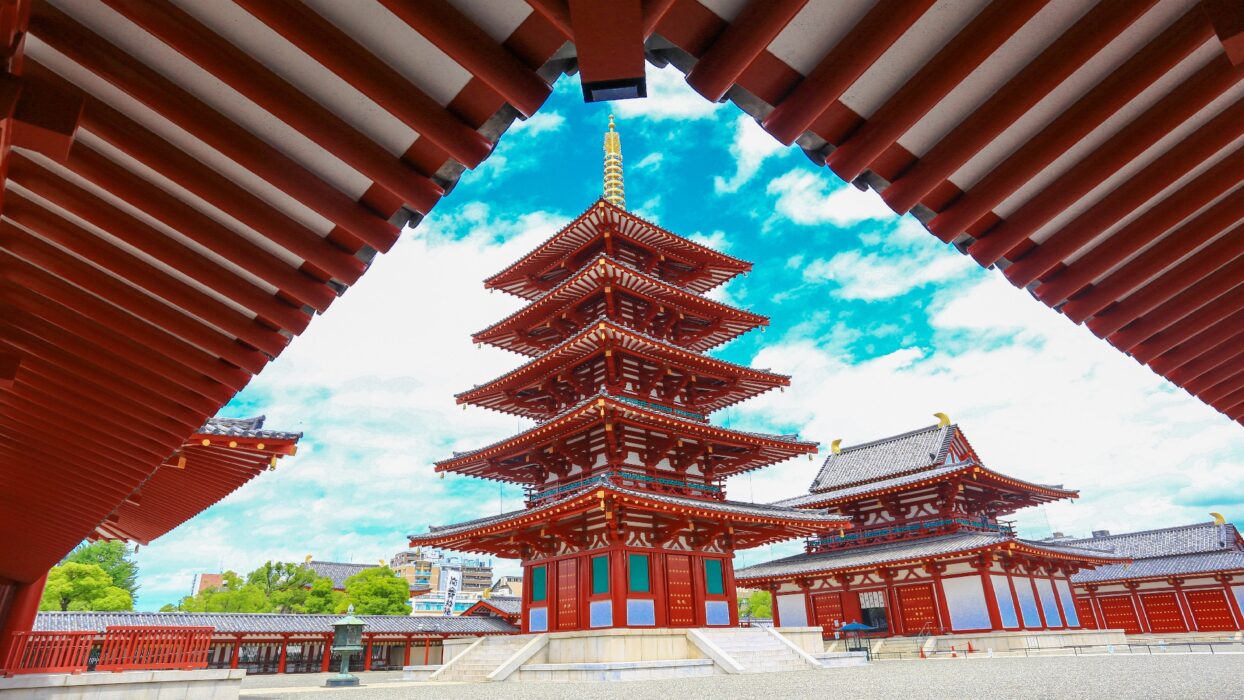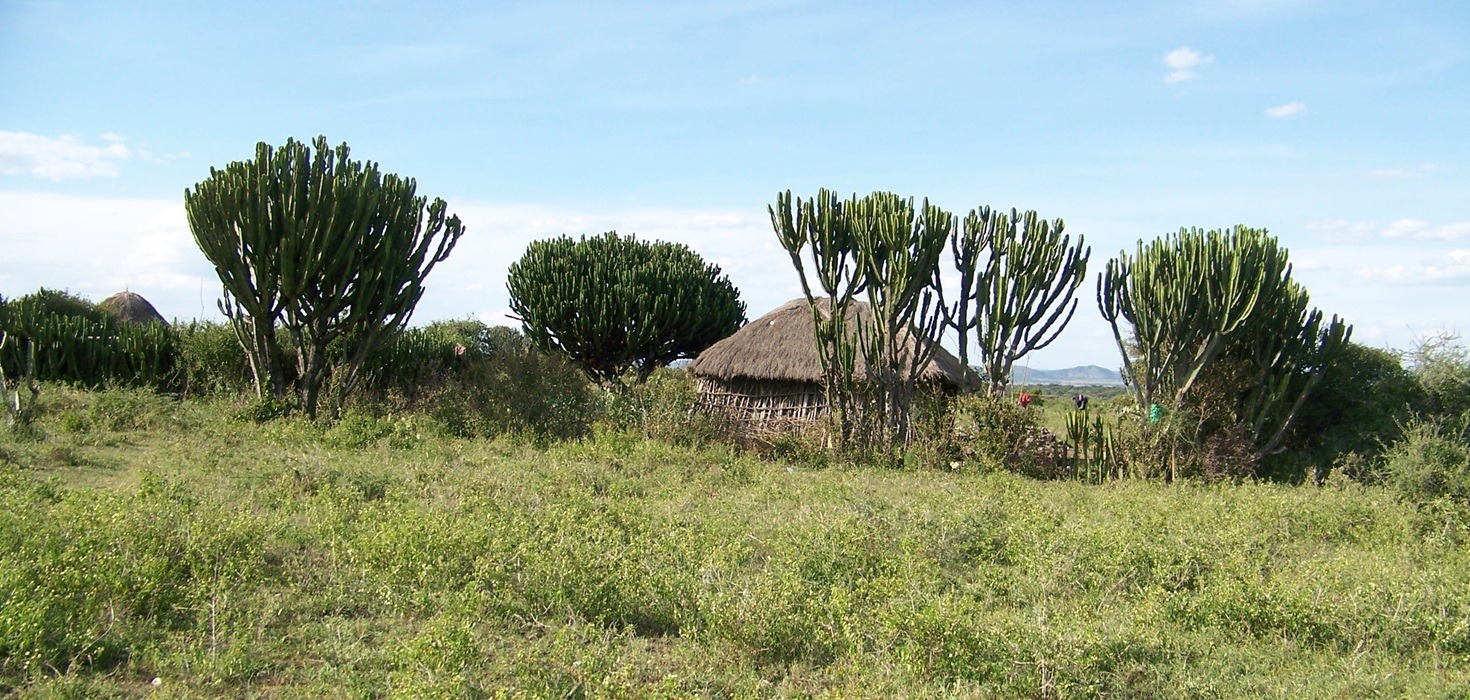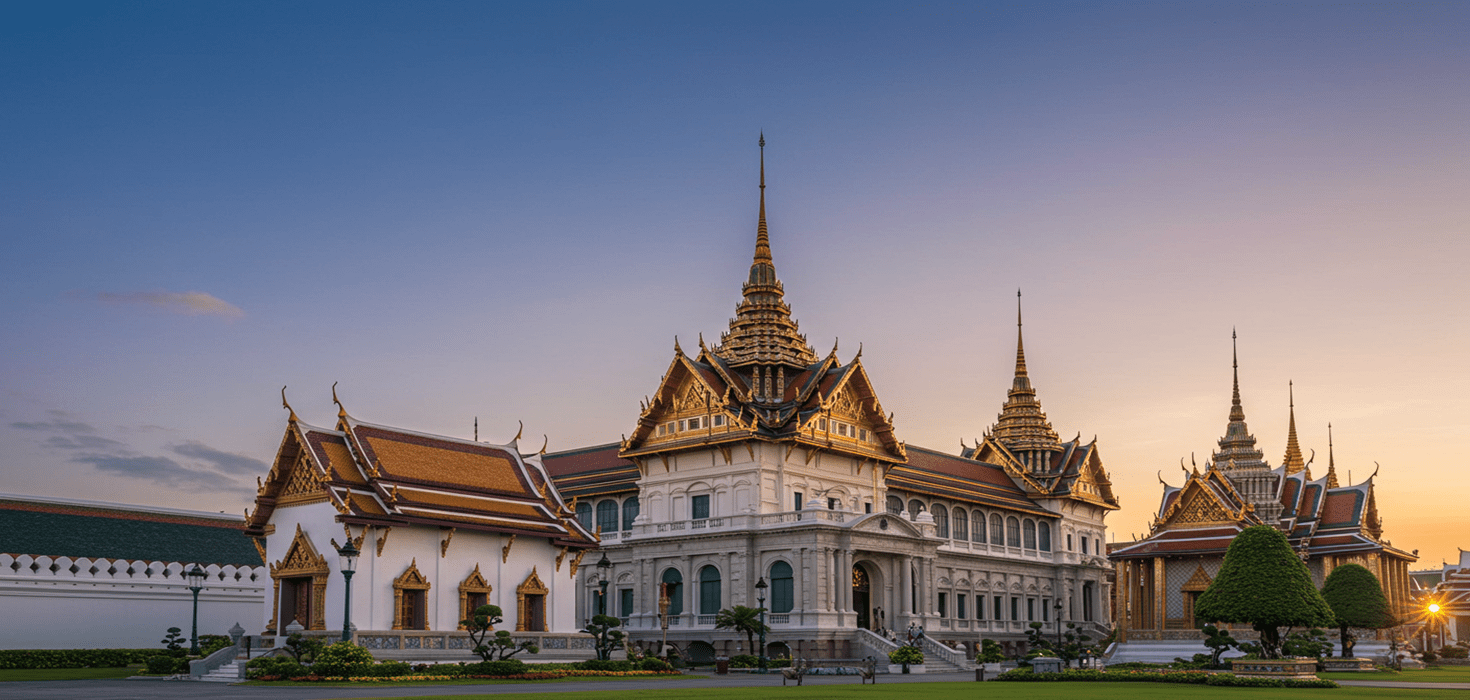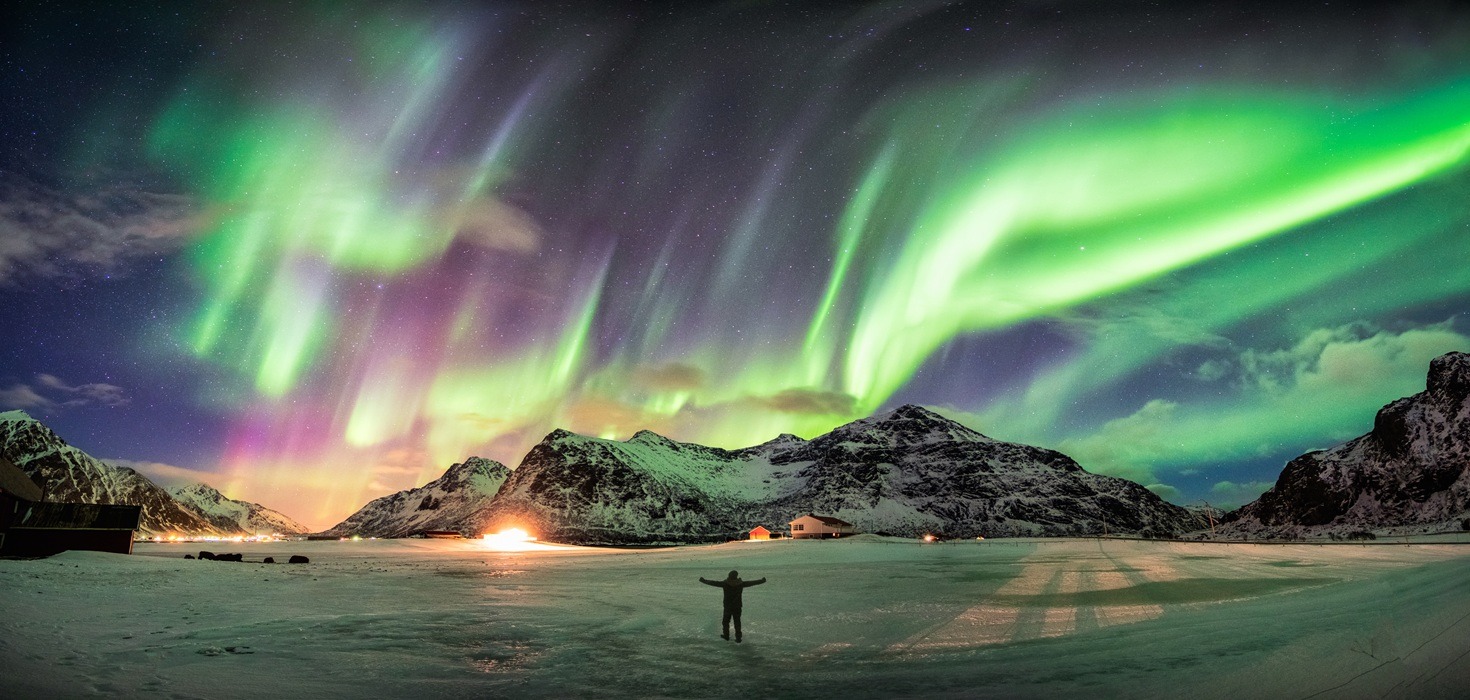Introduction
Imagine stepping into a world where tranquility reigns supreme, and every corner whispers tales of ancient wisdom. Welcome to Kinkaku-ji, the iconic Golden Pavilion of Kyoto! Nestled amidst lush gardens and serene ponds, this architectural marvel isn’t just a feast for the eyes; it’s a journey into Japan’s rich cultural tapestry. With its shimmering gold leaf exterior reflecting in the waters below, Kinkaku-ji is a must-visit destination that enchants travelers from all walks of life.
As you stroll through the meticulously designed gardens, you’ll feel a sense of peace wash over you, making it easy to see why this UNESCO World Heritage site has captured the hearts of so many. Whether you’re a history buff, an architecture enthusiast, or simply in search of a picturesque spot for your Instagram feed, Kinkaku-ji promises an unforgettable experience. So, lace up your walking shoes and get ready to explore this serene beauty that has stood the test of time!
Discovering Kinkaku-ji: The Golden Pavilion of Kyoto
Kinkaku-ji, officially known as the Kinkaku-ji Temple, is a stunning Zen Buddhist temple that dates back to the 14th century. Originally built as a retirement villa for the shogun Ashikaga Yoshimitsu, this magnificent structure showcases the elegance of traditional Japanese architecture. The temple is divided into three distinct floors, each representing a different architectural style.
The first floor, known as the Shinmei-zukuri style, is made of natural wood and features a simple yet elegant design. The second floor, built in the Bukke-ryō style, showcases a more ornate structure adorned with intricate details. Finally, the third floor, which is a Zen Buddhist style, is covered in brilliant gold leaf, giving Kinkaku-ji its iconic appearance. This unique blend of styles not only reflects the artistic sensibilities of the time but also serves as a testament to the temple’s historical significance.
As you gaze upon the shimmering facade, don’t forget to appreciate the surrounding gardens, which are designed to enhance the beauty of the pavilion. The carefully curated landscape features a variety of plants, rocks, and ponds, all arranged according to the principles of Zen gardens. These elements work harmoniously to create a sense of balance and tranquility, making Kinkaku-ji a true sanctuary in the heart of Kyoto.
For those looking to delve deeper into the history and significance of this remarkable site, check out our Comprehensive Guide to Kinkaku-ji Temple.
Opening Hours and Admission: Planning Your Visit
Ready to plan your visit to Kinkaku-ji? The temple is open every day from 9:00 AM to 5:00 PM, giving you ample opportunity to soak in the beauty at your own pace. Admission fees are quite reasonable, with adults paying around 400 yen and children at 300 yen. But here’s a little insider tip: if you want to avoid the crowds, try to arrive early in the morning or later in the afternoon. The light during these times is also perfect for photography!
Many visitors flock to Kinkaku-ji during peak seasons, especially in spring and autumn when the gardens are in full bloom or adorned with colorful foliage. If you can, plan your visit during the weekdays to enjoy a more peaceful experience. Trust us, the tranquility of the temple is best appreciated when you’re not sharing it with a sea of tourists!
For more details on visiting hours and tips, don’t miss our article on Kinkaku-ji Temple Opening Hours.
The Zen Experience: Exploring Kinkaku-ji’s Gardens and Tranquility
As you wander through the gardens of Kinkaku-ji, you’ll quickly understand why they are considered a masterpiece of Zen garden design. The gardens are not just beautiful; they are a representation of Japanese aesthetics and philosophy, crafted to evoke a sense of peace and contemplation. Each step along the winding paths reveals new perspectives of the Golden Pavilion, framed by meticulously placed rocks and tranquil ponds.
One of the most enchanting aspects of the gardens is the way they change with the seasons. In spring, cherry blossoms burst into bloom, while autumn brings a riot of fiery colors. During winter, a light dusting of snow transforms the scene into a serene wonderland. Travelers often share that the gardens provide a perfect backdrop for reflection, meditation, or simply soaking in the beauty of nature.
Many visitors find that sitting quietly by the pond, listening to the gentle rustle of leaves and the soft chirping of birds, allows them to truly connect with the essence of Kinkaku-ji. If you’re looking for a moment of tranquility, don’t rush through; take your time to breathe in the peaceful atmosphere. Personal stories from travelers often highlight these moments of calm as the highlight of their visit, reminding us that sometimes, the best experiences come from simply being present.
For a unique experience, consider visiting during the cherry blossom season. Check out our guide on how to Experience Kinkaku-ji During Cherry Blossom Season for tips on the best times to visit!
Seasonal Splendor: The Best Times to Visit Kinkaku-ji
Every season at Kinkaku-ji offers a unique charm, making it a delightful destination year-round. Whether you’re a fan of cherry blossoms, vibrant autumn leaves, or the serene beauty of snow, Kinkaku-ji has something special to showcase in each season.
Spring: A Floral Wonderland
Spring is a magical time to visit Kinkaku-ji, as cherry blossoms burst into bloom, creating a stunning contrast against the temple’s golden facade. This season typically peaks in early April, so plan your visit around this time for the best views. The gentle pink petals fluttering in the breeze add an enchanting touch to the already picturesque scenery. Don’t forget your camera; the combination of the Golden Pavilion and cherry blossoms is a sight you won’t want to miss!
Summer: Lush Greenery and Serenity
Summer brings a vibrant green landscape, with lush foliage surrounding the temple. The gardens are alive with color, and the serene atmosphere makes for a peaceful visit. Early mornings are particularly lovely, as the sunlight dances on the pond’s surface. If you’re lucky, you might catch a glimpse of the koi fish swimming gracefully below. Just remember to stay hydrated and wear sunscreen, as Kyoto can get quite warm during the summer months!
Autumn: A Canvas of Colors
As the leaves begin to change, Kinkaku-ji transforms into a canvas of fiery reds, oranges, and yellows. Autumn is a popular time to visit, typically peaking in mid-November. The reflection of the colorful foliage in the pond creates a breathtaking scene that is perfect for photography. Bring a picnic to enjoy in the gardens, and take your time soaking in the stunning sights!
Winter: A Serene Wonderland
Winter at Kinkaku-ji offers a tranquil experience, especially if you visit after a fresh snowfall. The golden temple against a backdrop of white snow is simply magical. This is a quieter time for visitors, so you can enjoy the peace and stillness of the gardens. Just be sure to dress warmly, as temperatures can drop significantly!
For photography enthusiasts, each season provides different lighting and colors that can enhance your shots. Consider visiting during the early morning or late afternoon for that perfect golden hour glow. Want to know more about the seasonal beauty of Kinkaku-ji? Check out our guide on Discover Kinkaku-ji’s Seasonal Splendor.
Cultural Significance: Kinkaku-ji and Zen Buddhism
Kinkaku-ji is not just a pretty face; it’s steeped in cultural heritage and Zen philosophy. Originally constructed as a retreat for the shogun Ashikaga Yoshimitsu, the temple reflects the ideals of Zen Buddhism, emphasizing simplicity, tranquility, and harmony with nature. The architecture and gardens embody these principles, inviting visitors to pause, reflect, and connect with their surroundings.
One fascinating legend associated with Kinkaku-ji involves the shogun himself. It is said that he would often meditate by the pond, seeking enlightenment and peace. This history adds a layer of depth to your visit, reminding you that Kinkaku-ji is more than just a beautiful structure; it’s a place of spiritual significance. Visitors often leave feeling a sense of calm and clarity, a testament to the temple’s enduring influence.
As you explore the gardens, take a moment to appreciate the carefully arranged stones and water features, which are designed to promote contemplation. Many travelers share how these elements foster a sense of peace, making Kinkaku-ji a sanctuary in the bustling city of Kyoto. If you’re curious to learn more about the spiritual side of Kyoto, don’t miss our article on the Spiritual Essence of Kyoto.
Culinary Delights: Dining Near Kinkaku-ji
After a day of exploring Kinkaku-ji, you’ll likely be ready to indulge in some delicious local cuisine. Kyoto is known for its rich culinary traditions, and you’ll find plenty of options near the temple to satisfy your cravings.
Must-Try Dishes
Don’t miss the chance to sample yudofu, a simple yet flavorful dish made with tofu simmered in a delicate broth. This dish is particularly popular in the temples of Kyoto and reflects the city’s Zen culinary philosophy. Another must-try is kaiseki, a traditional multi-course meal that showcases seasonal ingredients and meticulous presentation. It’s an experience as much as a meal!
Recommended Restaurants
For a delightful dining experience, head to Shoraian, located just a short walk from Kinkaku-ji. This quaint restaurant offers beautiful views of the gardens and specializes in yudofu. If you’re in the mood for something more elaborate, Gion Karyo offers exquisite kaiseki meals that will leave your taste buds dancing.
For a quick bite, Yudofu Sagano is a great option, serving up delicious tofu dishes in a casual setting. Pair your meal with a cup of matcha tea for the full Kyoto experience!
Feeling inspired to explore Kyoto’s culinary scene? Check out our guide on Must-See Temples in Kyoto for more dining recommendations and attractions!
Nearby Attractions: Expanding Your Kyoto Adventure
While Kinkaku-ji is a highlight of any Kyoto itinerary, there’s so much more to explore in the area! After soaking in the beauty of the Golden Pavilion, consider visiting some nearby attractions to enrich your experience.
Ryoan-ji
Just a short distance away is Ryoan-ji, famous for its rock garden. This UNESCO World Heritage site features a minimalist design that invites contemplation. The simplicity of the garden complements Kinkaku-ji’s ornate beauty, making it a perfect next stop.
Kyoto Imperial Palace
Another nearby gem is the Kyoto Imperial Palace, located in the spacious Kyoto Gyoen National Garden. Here, you can stroll through beautiful gardens and learn about the history of Japan’s imperial family. The palace grounds are free to enter, making it a great way to spend an afternoon.
For a full day of exploration, consider creating an itinerary that includes Kinkaku-ji, Ryoan-ji, and the Kyoto Imperial Palace. Each site offers a unique glimpse into Kyoto’s rich history and culture, ensuring your visit is well-rounded and fulfilling.
Photography Insights: Capturing Kinkaku-ji’s Beauty
For photography enthusiasts, Kinkaku-ji is a dream come true! The Golden Pavilion and its surroundings offer countless opportunities for stunning shots. Here are some tips to help you capture the magic of this iconic site.
Best Photography Spots
One of the best spots for capturing Kinkaku-ji is from the main pond, where you can get a full reflection of the temple in the water. Early morning or late afternoon light adds a warm glow to your photos, enhancing the golden hues of the pavilion.
Unique Perspectives
Don’t hesitate to explore different angles! The gardens provide various viewpoints, so take your time wandering around. Consider framing the temple with the surrounding trees or capturing close-ups of the intricate details of the architecture. A wide-angle lens can help you capture the grandeur of the pavilion alongside the serene gardens.
For more tips on photography at Kinkaku-ji, check out our article on Seasonal Photo Walk at Kinkaku-ji.
Festivals and Events: Celebrating Kinkaku-ji
Visiting Kinkaku-ji during one of its festivals can add an extra layer of excitement to your trip! Throughout the year, various events celebrate the temple’s cultural significance and the changing seasons.
Annual Events
One notable event is the Kinkaku-ji Temple Festival, held in early November. This festival features traditional performances, tea ceremonies, and cultural exhibitions, providing visitors with a deeper understanding of the temple’s heritage.
Another popular event is the Cherry Blossom Festival in spring, where you can enjoy special activities and view the stunning cherry blossoms in full bloom. Keep an eye on the temple’s website for updates on upcoming events and festivals, as they often provide unique experiences for visitors!
For more details about seasonal events, check our guide on Discover Kinkaku-ji’s Seasonal Splendor.
Practical Information for Travelers: Tips and Accessibility
Planning your visit to Kinkaku-ji? Here are some essential tips to ensure a smooth experience!
Getting There
Kinkaku-ji is easily accessible by public transportation. You can take a bus from Kyoto Station or the city center, which is a convenient option for most travelers. If you prefer to drive, there is parking available, but it can fill up quickly during peak times.
Accessibility Features
The temple grounds are relatively accessible, with pathways suitable for wheelchairs and strollers. However, some areas may have uneven surfaces, so proceed with caution. If you have specific accessibility needs, it’s a good idea to check in advance to ensure a comfortable visit.
For additional travel tips, be sure to check out our article on Kinkaku-ji Temple Opening Hours.
Safety and Health Guidelines: A Peaceful Visit
Your safety and health are important while visiting Kinkaku-ji. As with any popular tourist destination, it’s wise to stay informed about current health and safety guidelines.
Health Guidelines
Make sure to follow any health protocols in place, such as wearing masks in crowded areas and maintaining social distancing. Hand sanitizing stations are often available, so take advantage of them to keep your hands clean.
Enjoying Your Visit
Lastly, remember to be respectful of the temple and its surroundings. Kinkaku-ji is a place of worship and reflection, so keep noise levels down and be mindful of other visitors seeking peace. Your thoughtful behavior will enhance everyone’s experience!
Commonly Asked Questions (FAQs) About Kinkaku-ji
Curious about Kinkaku-ji? Here are some frequently asked questions to help you plan your visit:
What are the opening hours of Kinkaku-ji?
Kinkaku-ji is open daily from 9:00 AM to 5:00 PM.
How much is the admission fee?
The admission fee is 400 yen for adults and 300 yen for children.
Is there a best time to visit Kinkaku-ji?
While Kinkaku-ji is beautiful year-round, spring and autumn are particularly popular due to the cherry blossoms and fall foliage. Early mornings and late afternoons are ideal for avoiding crowds and capturing stunning photographs.
Can I take photos at Kinkaku-ji?
Yes! Photography is allowed, so be sure to capture the beauty of the Golden Pavilion and its surroundings.
If you have more questions or need additional tips, feel free to explore our resources on Kinkaku-ji for more information!
Whether you’re drawn by the beauty of the Golden Pavilion, the tranquility of the gardens, or the cultural richness of Kyoto, a visit to Kinkaku-ji is sure to leave you with cherished memories. So, pack your bags, grab your camera, and get ready to experience the magic of Kinkaku-ji for yourself!










